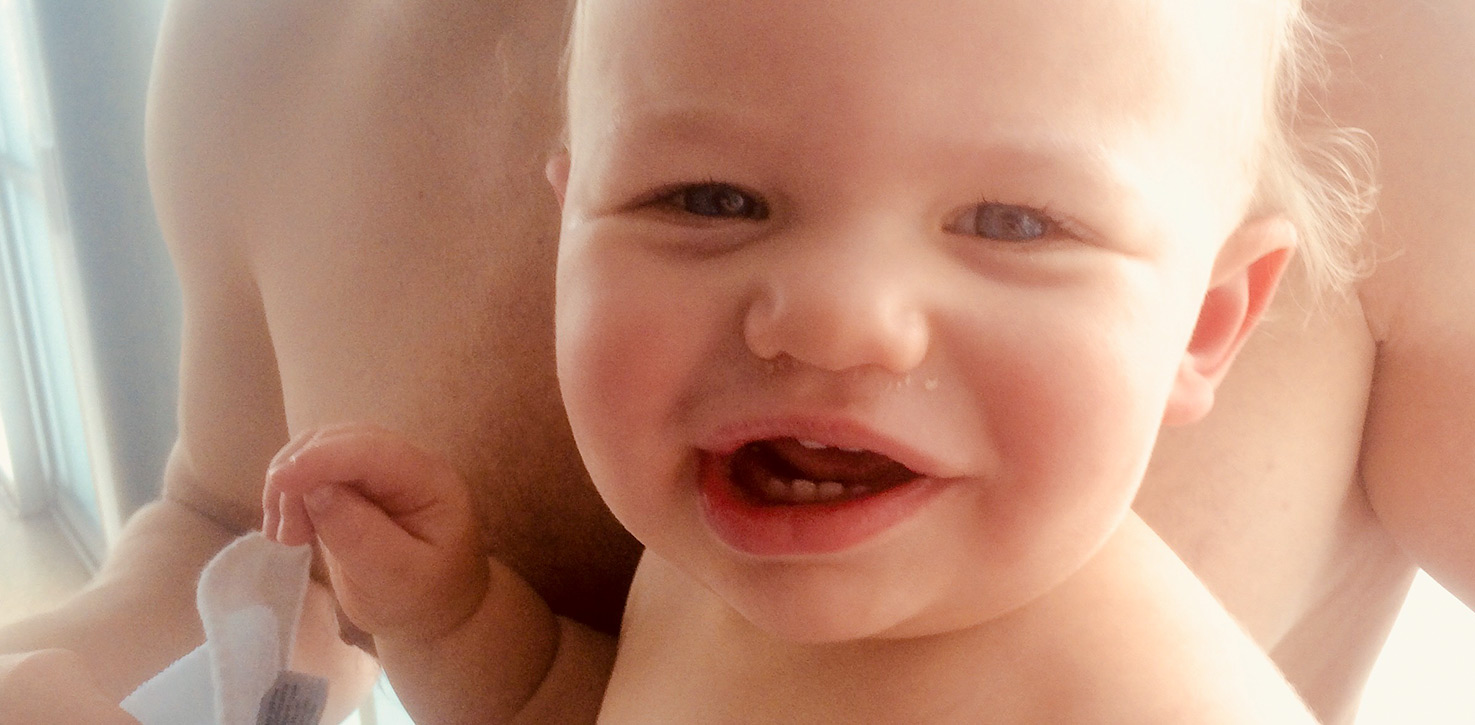
A Mom’s Guide to Swim Lessons
Splish. Splash. Summer.
Before it came time to teach my baby to swim, I had visions of my son Christian leaping into his father’s outstretched arms and squealing as he splashed into the pool. I pictured poolside BBQs with him floating lazily on a miniature float in his baby swim trunks and sun hat as the smell of fresh burgers filled the air. I couldn’t wait for these pictures in my mind to become a reality.
Or so I thought.
See, I had all these rosy visions while I was pregnant and had no idea that raising a child wasn’t just like a Coppertone commercial. When Christian was about to turn one year old and my husband Mikel and I actually started talking about swim lessons, my sunny images were replaced with the fear a new mom has about, well, everything. After all, I got nervous the first time I put Christian in the adult bathtub and he got to sit in more than two inches of water.

I went into panic mode just thinking about the possibilities lurking in a giant pool:
- What if they accidentally dropped him in the water?
- What if I accidentally dropped him in the water?
- What if he swallowed too much water?
- What if he screamed the whole time?
- Was chlorine even OK for babies?
I clearly needed to do some research before I put my kid anywhere near a pool. Especially since drowning is the number-one cause of unintentional injury-related death for children in southern Nevada.
Where I Started
I began by talking to my mom friends. Of course, I got a myriad of answers. Some went to “Parent and Me” classes at nearby rec centers, others went to swim schools, and one opted for personal lessons at home. I even heard about the Infant Swimming Resource (ISR) self-rescue method, where babies as young as six months old are taught to save themselves — supervised, of course.
Here’s a breakdown of my understanding of what these classes entail:
Parent and Me classes: These classes claim that having a parent in the water helps the child feel safe and comfortable and, therefore, more open to learning. They use a mixture of pool toys, kickboards and floatation devices — along with games to make the experience fun.
Swim schools: I looked into several swim schools near me. They were definitely pricier than the rec center option but offered similar-style classes, including Parent and Me, private and semi-private. However, the group-class sizes at swim schools I looked into had a maximum of five or six students, while the rec centers went up to eight to 10 children per class.
ISR: This method intrigued and scared me the most. After some research, I realized it was more of a water survival course than swim lessons; however, continued lessons do result in actually learning how to swim. It was pretty costly too.
Choosing a course that was right for Christian ultimately came down to class availability, location and cost. We finally decided to enroll him in the Parent and Me classes at a rec center. We liked the idea of Christian being comfortable with us in the water— and even learning while distracted. Because that’s life, right?
The lessons were twice a week for 30 minutes. The one thing all the options seemed to agree on was that lesson time should be no longer than 30 minutes due to a child’s inability to focus or retain much information beyond that point.
The Lessons — Christian’s and Mine
Walking in to the first day of swim lessons, Christian looked cool (and cute) as a cucumber in his new swim shorts. I was still a little nervous, but I was relieved not to be knocked down by the smell of chlorine as we entered the indoor space.

Remember my initial apprehensions? Well, I discovered that I wasn’t the only parent worried about what the pool’s chemicals could do to my baby’s delicate skin and digestive system. I also learned a good trick: If you walk into an indoor swim space and are overwhelmed by the smell of chlorine, your baby will be too. Pools with minimal chlorine smell will be safer; however, research also cautioned that swallowing too much pool water could be linked to asthma and other respiratory issues down the road, so be aware of your child’s water intake.
As for my other concerns, I am happy to report that Christian was never accidentally dropped in the pool by anyone. The instructor actually had very little hands-on interaction with the children; she demonstrated the moves and led us in fun songs and games, and I managed to keep Christian above water despite not being much taller than the shallowest part. (Being a short mama is tough!)

And to my relief, Christian loved the pool — no screaming. He batted at the rippling water and smiled at the other kids as they kicked past him. I must say that he was a bit lazy. He had no problem letting Mikel and I do the lion’s share of the work while he chased after pool toys and threw rings. But the most important thing to me was that he had fun and that Mikel and I got to be a big a part of it.

After all my mom stress and research, my biggest takeaway is this: Teaching your children to swim is essential to keeping them safe during one of summer’s most sought-after activities; however, there is not just one “right” way to do it. I was pleased with what we chose for Christian’s first foray into the pool and look forward to seeing him become an independent swimmer one day!























